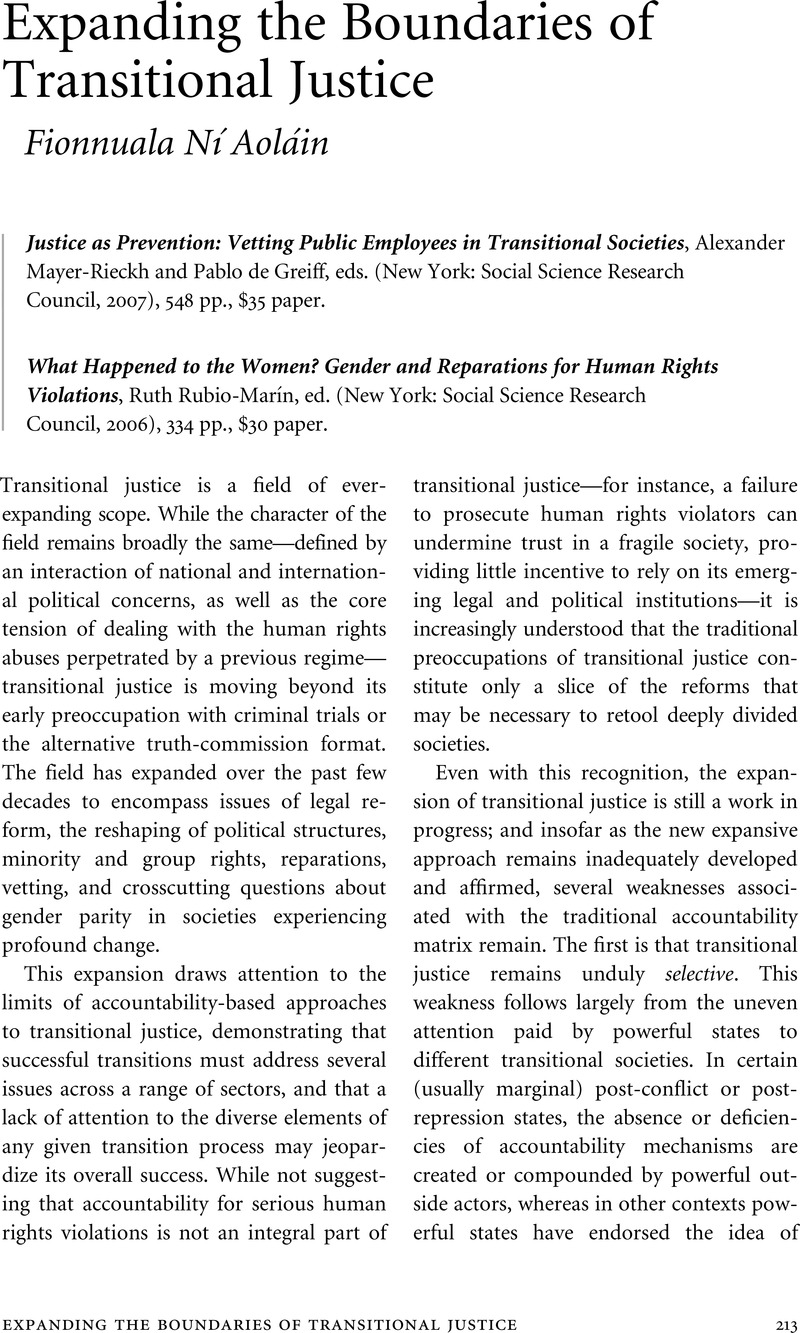Article contents
Expanding the Boundaries of Transitional Justice
Published online by Cambridge University Press: 25 March 2011
Abstract

- Type
- Review Essay
- Information
- Copyright
- Copyright © Carnegie Council for Ethics in International Affairs 2008
References
Notes
1 And, as Ruti Teitel has painstakingly noted, the very same legal and political institutions that ought to be held to account often shoulder the responsibility of facilitating the transition. See Ruti G. Teitel, Transitional Justice (New York: Oxford University Press, 2000).
2 Solomon Moore, “Ex-Baathists Get a Break. Or Do They?” New York Times, January 14, 2008.
3 On intersectionality in transition, see Fionnuala Ní Aoláin and Eilish Rooney, “Underenforcement and Intersectionality: Gendered Aspects of Transition for Women,” International Journal of Transitional Justice 1, no. 3 (2007), pp. 338–54.
4 See, e.g., Fionnuala Ní Aoláin and Catherine Turner, “Gender, Truth and Transition,” UCLA Women's Law Journal 16 (2007), pp. 229–79.
- 1
- Cited by




